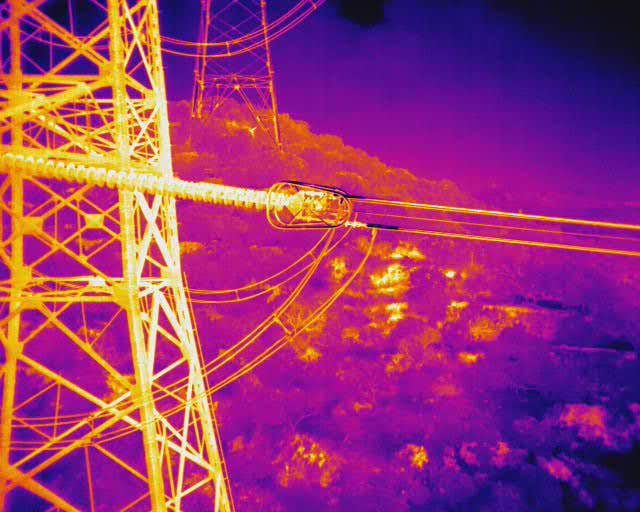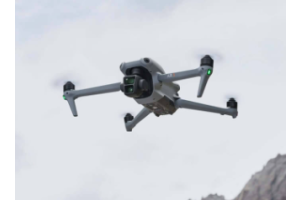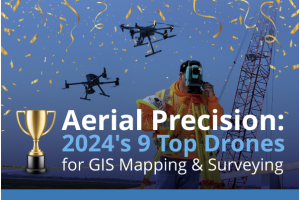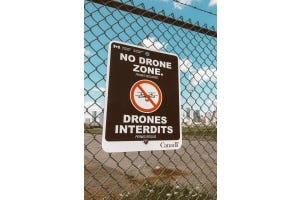
Aerial thermal imaging cameras have a wide variety of uses and applications, from search and rescue to asset inspections, to precision agriculture. Whatever your field may be, it’s important to be informed about the best options available to you, but it can be confusing to wade through the fine print to really understand what the best fit for your needs might be. To that end, here we compare two standout thermal camera options on the market, the DJI Zenmuse XT and the DJI Zenmuse XT2. If you haven’t caught on to this yet, one major point of difference between the Zenmuse XT and the XT2 is that the XT is solely an infrared camera, whereas the Zenmuse XT2 is a single unit equipped with both an infrared and visual camera. The camera you choose will depend, obviously, on your needs and intended use. Need more information on thermal? Read the blog on Understanding Thermal Drones.

Though it is undoubtedly the lower-end model, one factor in favor of the Zenmuse XT is the fact that it is somewhat more versatile in it’s application, in the sense that it is compatible with a wider selection of the DJI drone models. It can be mounted to the Matrice 100, Matrice 200 Series (M200, M210, M210 RTK), Matrice 600, and the Inspire 1. The upgraded model, Zenmuse XT2, can only be used with the M200 Series (M200, M210, M210 RTK) and M600 Pro drones. If you already own one of these drone models and are not looking to add to your fleet at this time, this is an important consideration when selecting your infrared camera.

MSX® provides the ability to enhance thermal image stills and video on infrared cameras. This capability is provided by an onboard fusion process exclusively from FLIR. FLIR’s patented MSX® technology, known as Multispectral Dynamic Imaging, combines the thermal and visual images in real-time. This results in higher image quality and detail than can be achieved with only one sensor. In addition to combining the images, you also have the option to view thermal and visual data side by side for comparison.
Although the Zenmuse XT features a number of image enhancement software features designed by FLIR, the MSX® technology is unique to the Zenmuse XT2, mostly because the XT2 houses both a thermal camera and a visual camera, providing the both types of images needed to make MSX® work.

If your infrared camera use applications include extreme weather conditions, the Zenmuse XT might not be the best fit for your needs. The Zenmuse XT is rated for use from temperatures ranging from 14°F to 104°F (-10° to 40 ℃), and humidity ranging from 5% to 95%, which covers most normal weather conditions, as long as it’s more or less dry. The Zenmuse XT does not come with an IP rating, however, implying that it does not have any real degree of water resistance.
The Zenmuse XT2, on the other hand, while supplying no information on temperature or humidity operating range, has an IP rating of 44. The first number of the IP rating indicates, from 0-6, the level of protection against solid particles (dust). Zero means no protection, and six means complete protection. The Zenmuse XT2’s rating of 4 means that is protected from objects greater than 1 mm in diameter. The second number of the IP rating denotes water resistance, with zero meaning no protection, and 8 meaning water resistance including immersion greater than 1 meter. The rating of 4 in the XT2 means that is it protected against splashing, spraying, and dripping water. This IP rating clearly shows that the Zenmuse XT2 is the superior choice if your infrared camera needs include use in wet environments or extreme weather conditions.
Lined up side-by-side, you can see below some of the basic specifications of the XT and XT2. In some cases information on one or the other is not readily available, often being dependent on options selected at the time of purchase. You may care to notice that in the basic function of thermal imaging, the Zenmuse XT and XT2 have nearly identical specs (pixel pitch, spectral band, sensitivity, etc.)
| DJI Zenmuse XT | DJI Zenmuse XT2 | |
| Dimensions | 103 mm x 74 mm x 102 mm | With 25 mm lens: 123.7 x 112.6 x 127.1 mm;With other lens: 118.02 x 111.6 x 125.5 mm |
| Weight | 270 g | Info N/A |
| Thermal Imager | Uncooled VOx Microbolometer | Uncooled VOx Microbolometer |
| Video Display Formats | 640 x 512; 336 x 256 | 640 x 512; 336 x 256 |
| Analog Video Display Formats | 720 x 480 (NTSC); 720 x 576 (PAL) | Info N/A |
| Pixel Pitch | 17 μm | 17 μm |
| Spectral Band | 7.5 – 13.5 μm | 7.5 – 13.5 μm |
| Full Frame Rates | 640 x 512: 30 Hz (NTSC); 25 Hz (PAL)336 x 256:30 Hz (NTSC); 25 Hz (PAL) | 30 Hz |
| Exportable Frame Rates | 7.5 Hz NTSC; 8.3 Hz PAL | <9 Hz |
| Sensitivity (NEdT) | <50 mK at f/1.0 | <50 mK at f/1.0 |
| Scene Range (High Gain) | 640 x 512: -25° to 135°C336 x 256: -25° to 100°C | 640 x 512: -25° to 135°C336 x 256: -25° to 100°C |
| Scene Range (Low Gain) | -40° to 550°C | -40° to 550°C |
| Spot Meter | Temperatures measured in central 4×4 | Info N/A |
| File Storage | MicroSD Card | MicroSD card |
| Photo Format | JPEG, TIFF | JPEG, TIFF, R-JPEG |
| Video Format | MP4 | 8 bit: MOV, MP4; 14 bit: TIFF Sequence, SEQ** |
Both the Zenmuse XT and the XT2 come with two similar resolution options; with both the XT and XT2 you can select either a 640 × 512 Field of View (FoV) or 336 × 256 FoV. The larger will obviously give you a clearer, more detailed image, but when selecting your FoV option, it’s also important to consider the lens you select, and how it will impact the angle of the field of view. Note also that the visual camera on the Zenmuse XT2 comes with a prime lens, with focus at 8 mm. You can see the nitty-gritty details of the resolution and lens options in the table below:
| DJI Zenmuse XT | DJI Zenmuse XT2 | |
| Lens Models 640×512 FoV iFoV 336×256 FoV iFoV | 7.5mm, 9mm, 13mm, 19mm6.8mm, 9mm, 13mm, 19mm | 9mm, 13mm, 19mm, 25mm9mm, 13mm, 19mm, 25mm |
| 640×512 FoV iFoV | N/A, f/1.4 90° x 69° 2.267 mr, f/1.4 69° x 56° 1.889 mr, f/1.25 45° x 37° 1.308 mr, f/1.25 32° x 26° 0.895 mr | N/A, f/1.25 45°×37° 1.308 mr, f/1.25 32°×26° 0.895 mr, f/1.1 25°×20° 0.680 mr |
| 336×256 FoV iFoV | f/1.4 49.1° x 37.4° 2.519 mr, N/A, f/1.25 35° x 27° 1.889 mr, f/1.25 25° x 19° 1.308 mr, f/1.25 17° x 13° 0.895 mr | f/1.25 35°×27° 1.889 mr, f/1.25 25°×19° 1.308 mr, f/1.25 17°×13° 0.895 mr, N/A |
| Min Focus Distance | 2.3 cm, 2.5 cm, 3.2 cm, 7.6 cm, 15.3 cm | 3.2 cm, 7.6 cm, 15.3 cm, 30 cm |
| Hyperfocal Distance | 1.2 m, 1.2 m, 2.1 m, 4.4 m, 9.5 m | 2.1 cm, 4.4 cm, 9.5 cm, N/A |
| Hyperfocal Depth of Field | 0.6 m, 0.6 m, 1.1 m, 2.2 m, 4.8 m | 1.1 cm, 2.2 cm, 4.8 cm, N/A |
If you would like to speak to an infrared drone solutions consultant feel free to give us a call at 805-480-4033







